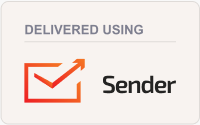SFUSD’s current assignment system has been in place since 2011. It was designed to overcome residential segregation by giving families the option to choose from any school in the district. However, it has not worked as intended. The following are some of the biggest problems with the current system, and how the new zone-based system seeks to improve student assignment to benefit more students, families, and schools.
It’s Not Working for Many Students and Families
- Stress and anxiety for families. Families have told us that the current system is complicated and causes them stress and anxiety. Some of the reasons are that there are 72 elementary and K-8 schools to choose from, the process takes several months, and there are numerous rounds and rules to keep up with.
- Unpredictability for families. Families have also told us that the current system feels unpredictable, so much so that many call it “the lottery.” Although about 80% of families typically receive one of their top three school choices, families still feel anxious between when they apply and when they get their school assignment because they are not certain which of the 72 elementary schools they will get.
- Far travel distance for families. Right now, many San Francisco families travel all over the city to reach their child’s school. On average, students living in the same Elementary School Attendance Area go to 27 different schools. This means that many students living in the same neighborhood are not going to school with each other, and not forming the social connections that bring communities together. Families have told us that they desire and deserve stronger connections with their fellow neighbors.
- Segregation in our schools. Our own SFUSD data shows that, under the current system, more schools are segregated by income, race/ethnicity, and academic performance than they were 10 years ago. Many of our low-income students are concentrated in high-poverty schools, and historically marginalized students--Pacific Islanders, English Learners, Latinx, and African Americans--are more often enrolled in high-poverty schools, while white students are more often enrolled in low-poverty schools.
To see what other families told us about their hopes and desires for their schools and students, please read our 2020 Community Engagement Report.
How the New Zone-Based System Will Be Better
- Offer families more predictability on where their children will attend school and minimize the effort families must use to enroll their children in school.
- Reduce travel times for families and strengthen social connections between schools and communities.
- Balance enrollments across schools and provide a framework to strategically plan and allocate resources to meet the needs of every student, including language pathways and special education pathways.
- Support the efficient and cost-effective use of school facilities and transportation services.
- Create more integrated schools and classrooms that will help narrow the opportunity and achievement gap in the District.
We want to acknowledge that change can be difficult, and that we will face potential challenges as a district and as a city as we move into the new assignment system. However, we also recognize that the current system perpetuates outcomes that are unacceptable, including segregated schools, inequitable school funding, and unequal student outcomes. This is our opportunity as a community to create a stronger, healthier school district for the future of our students and families.
In future newsletters, we will share some of the challenges we see, and how we are addressing them, as well as more information on the zone development process.
